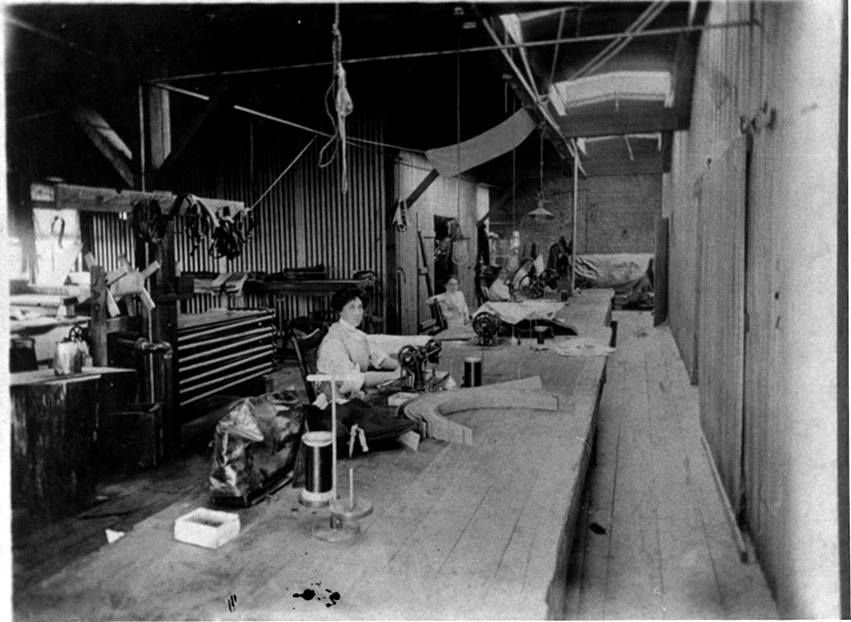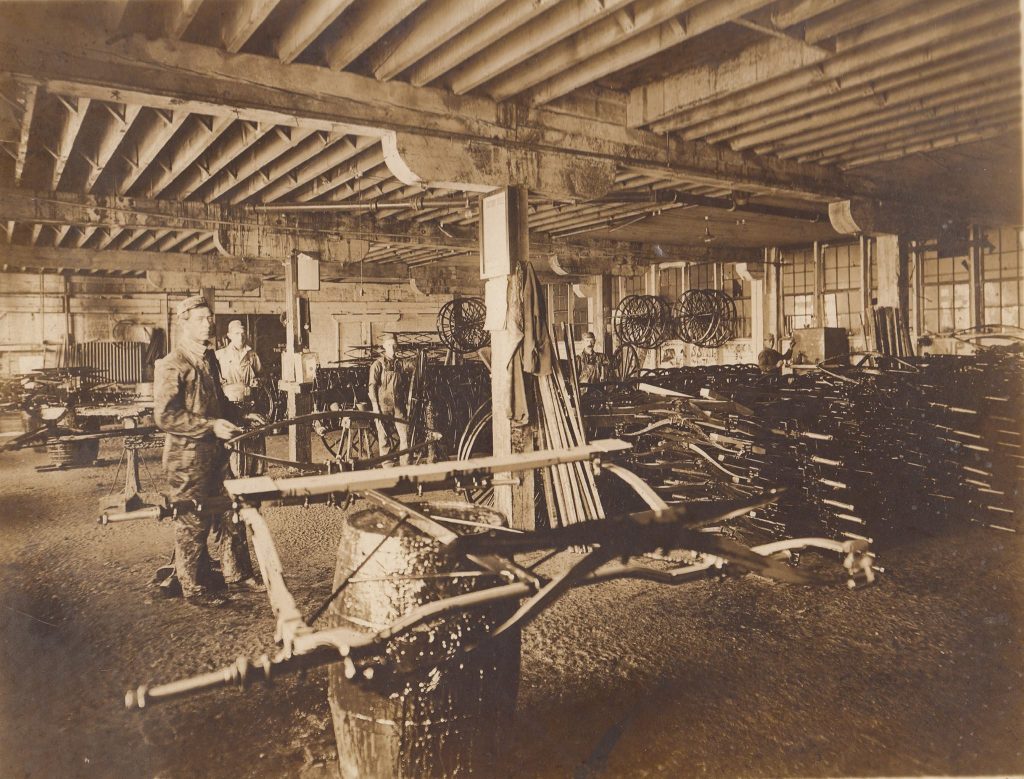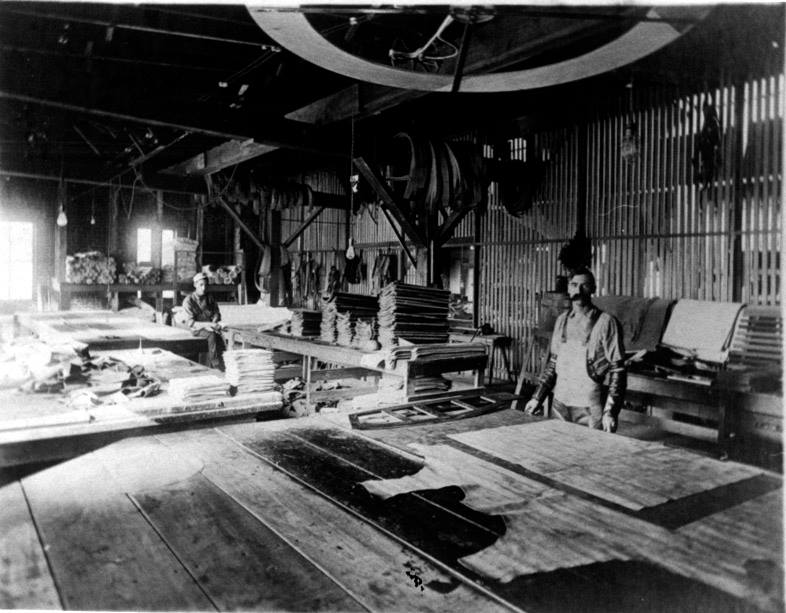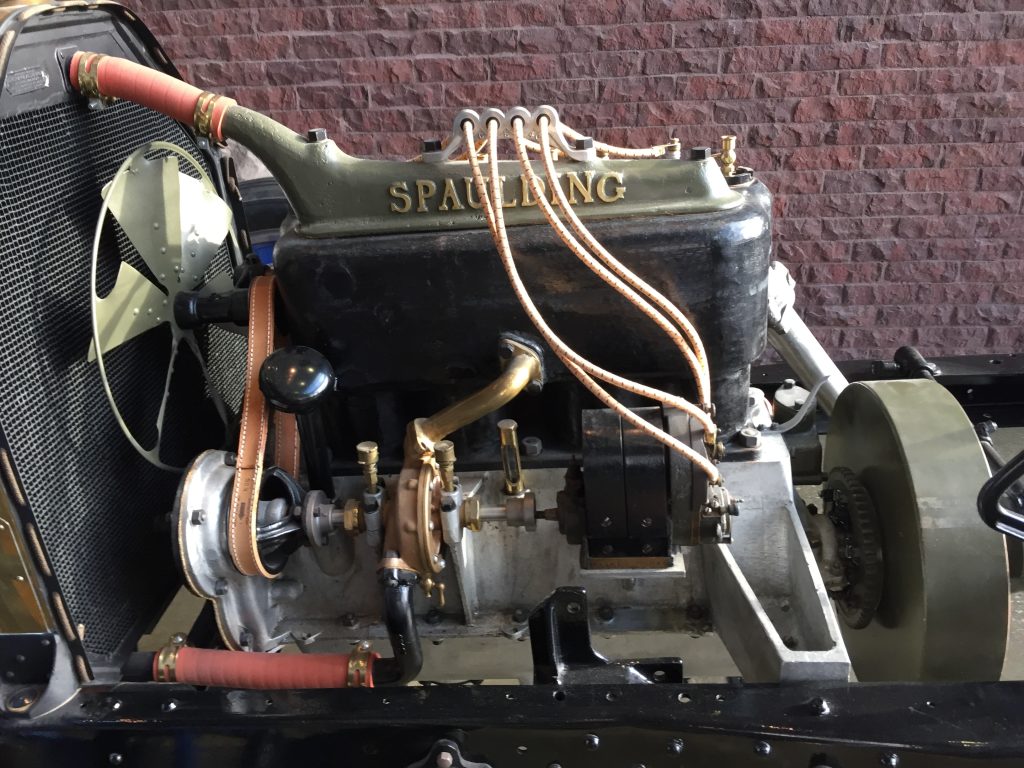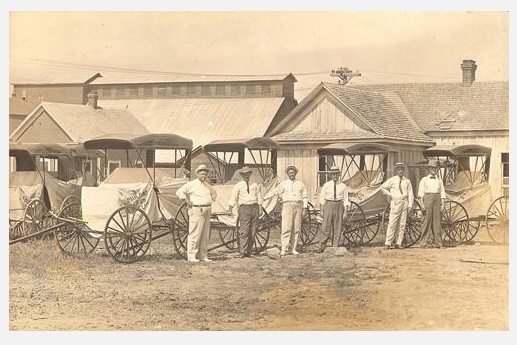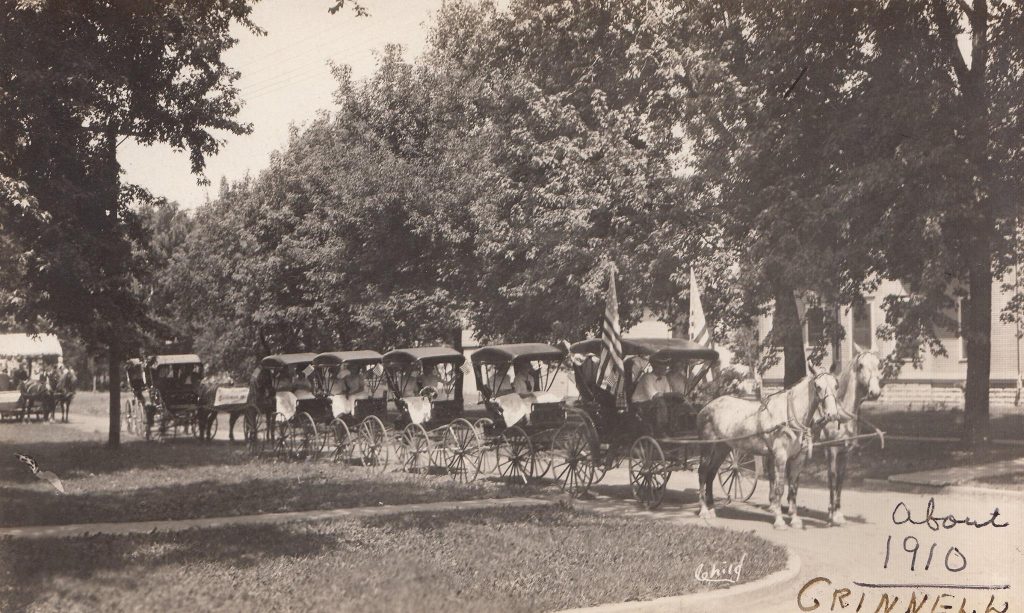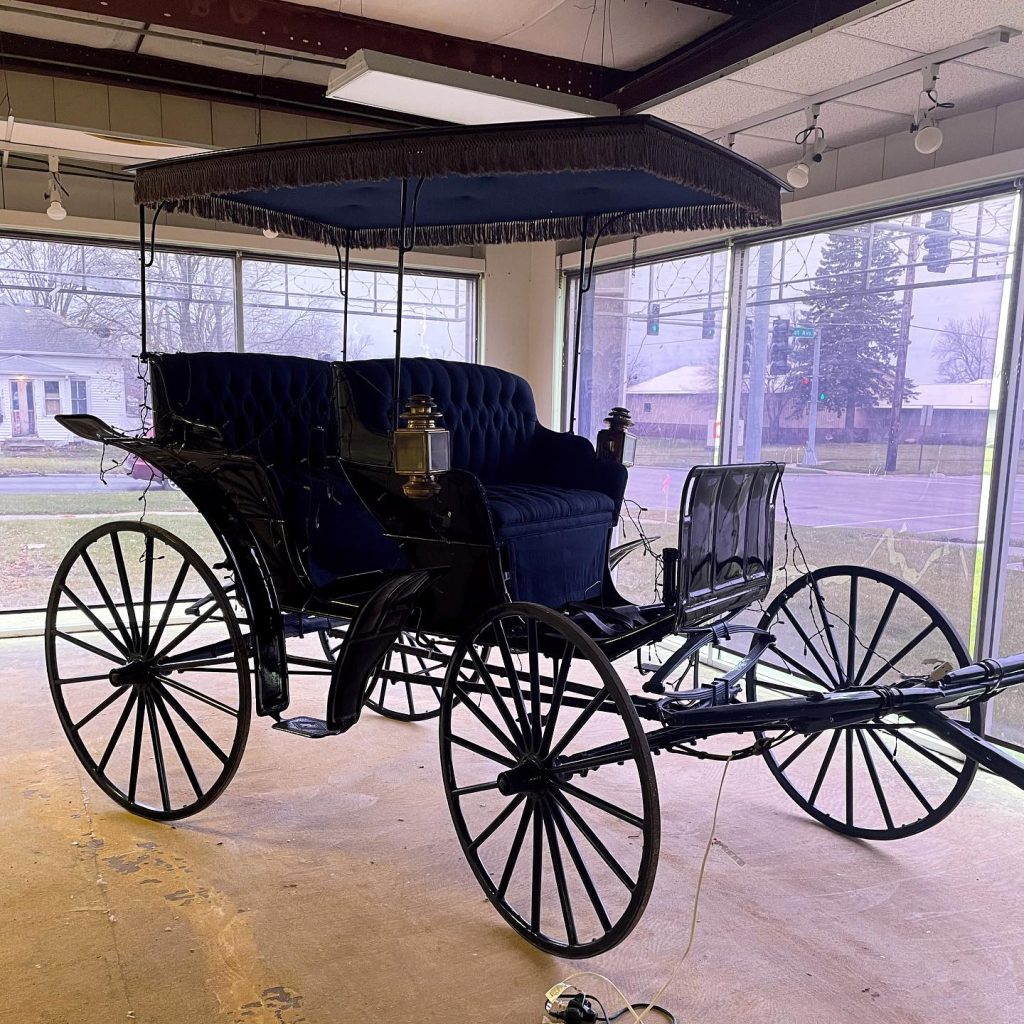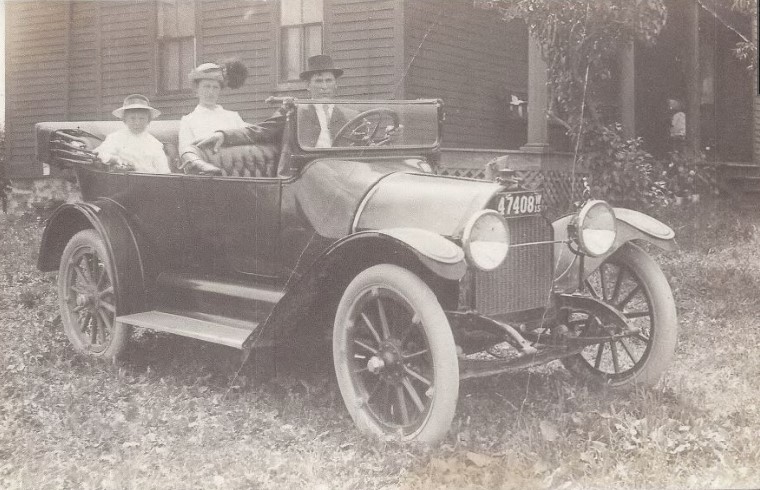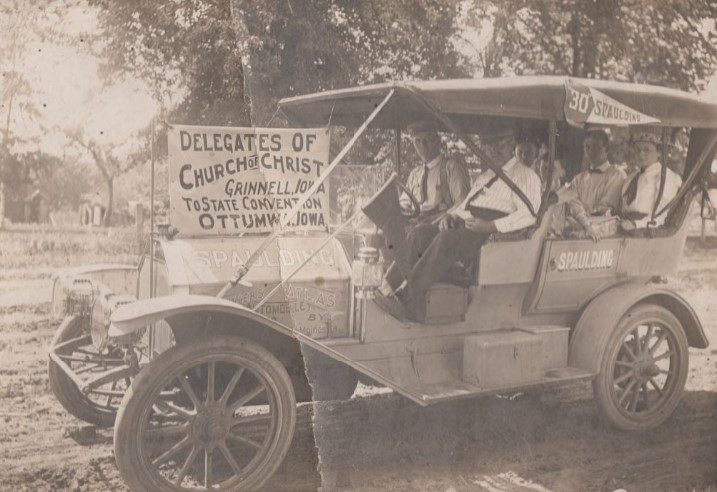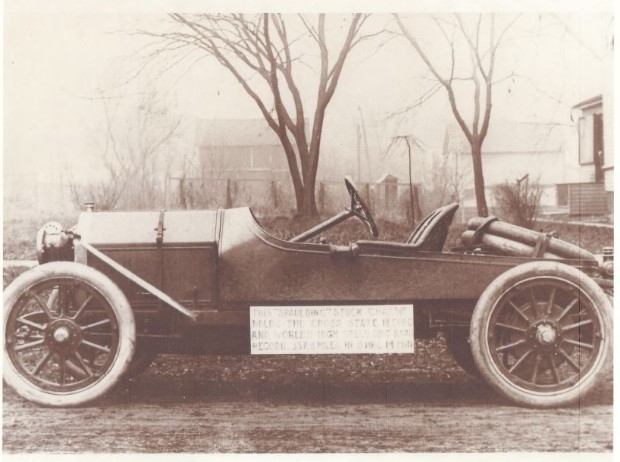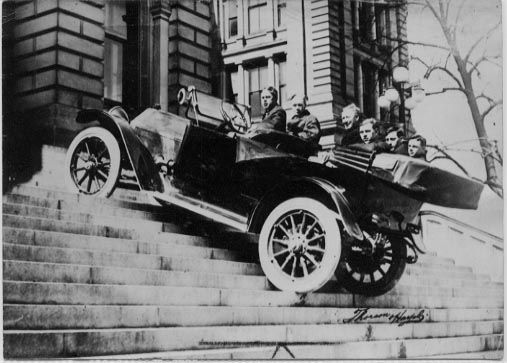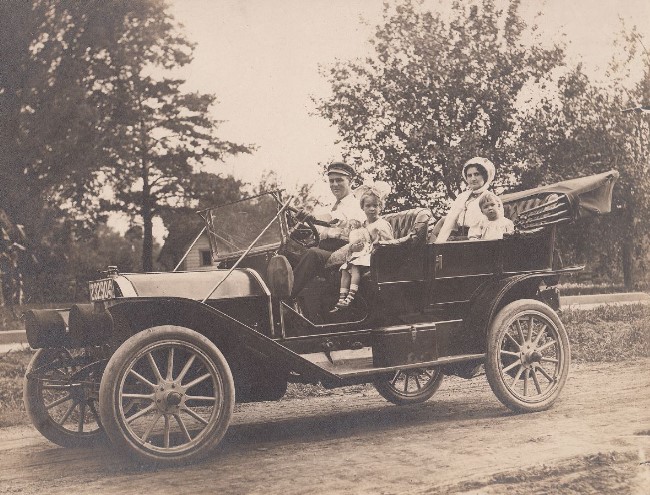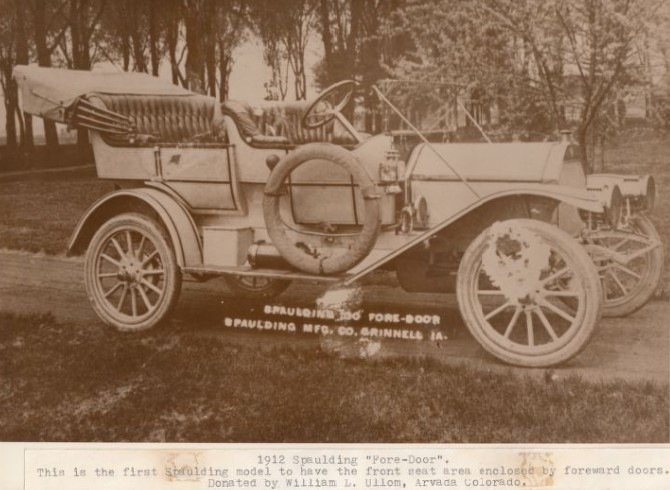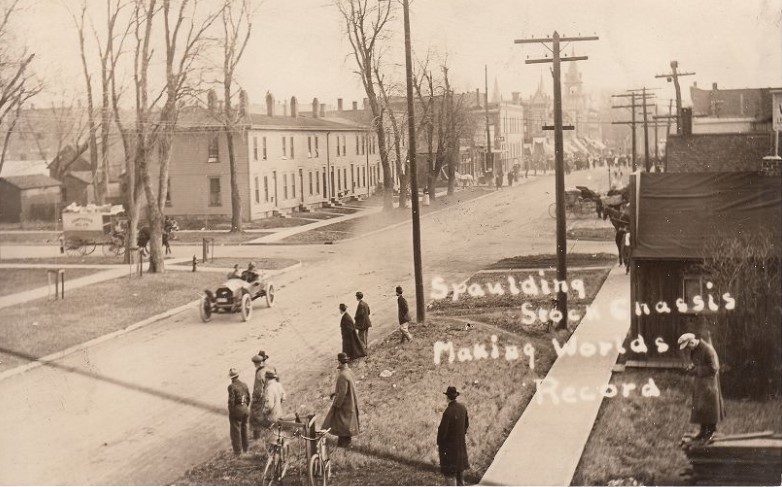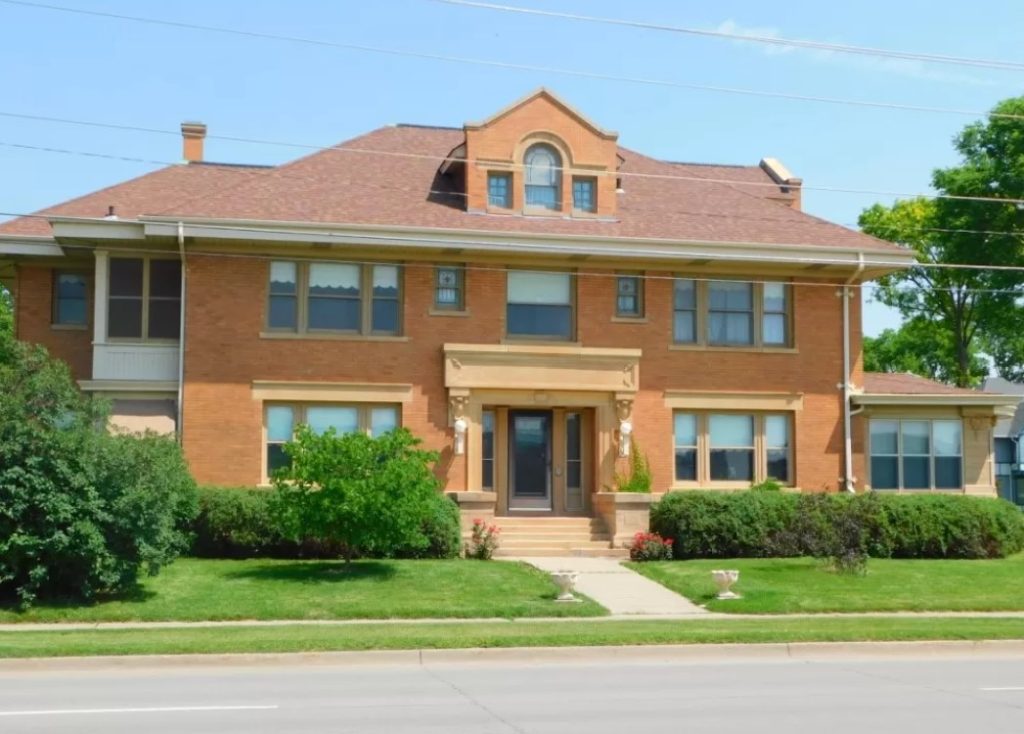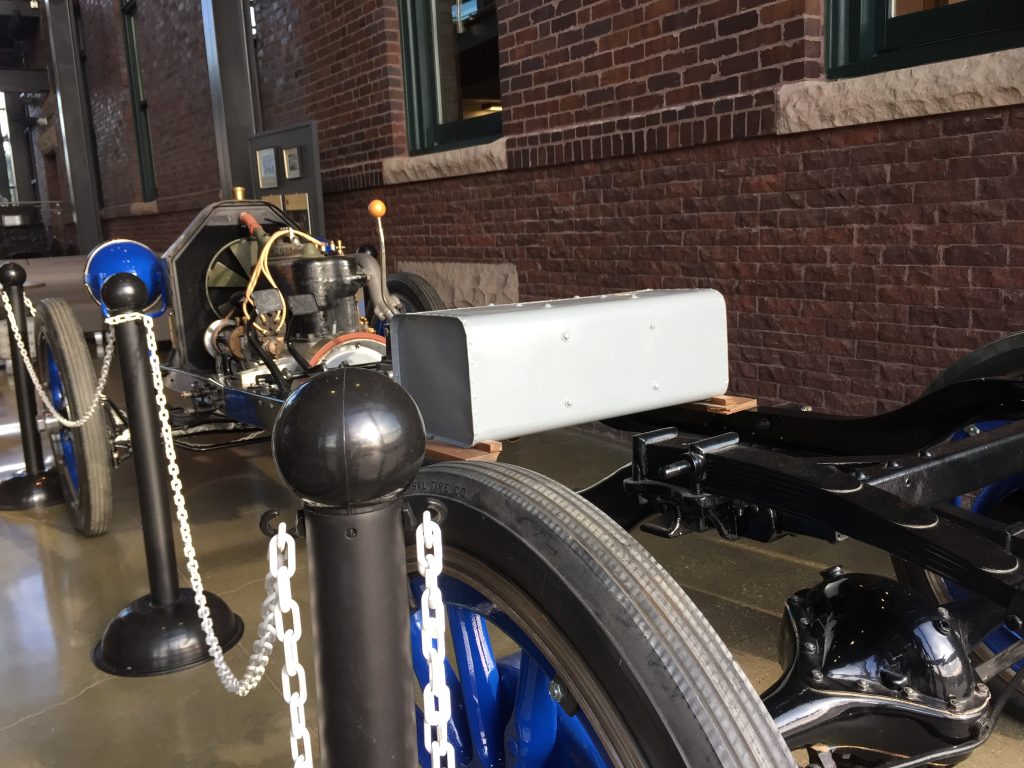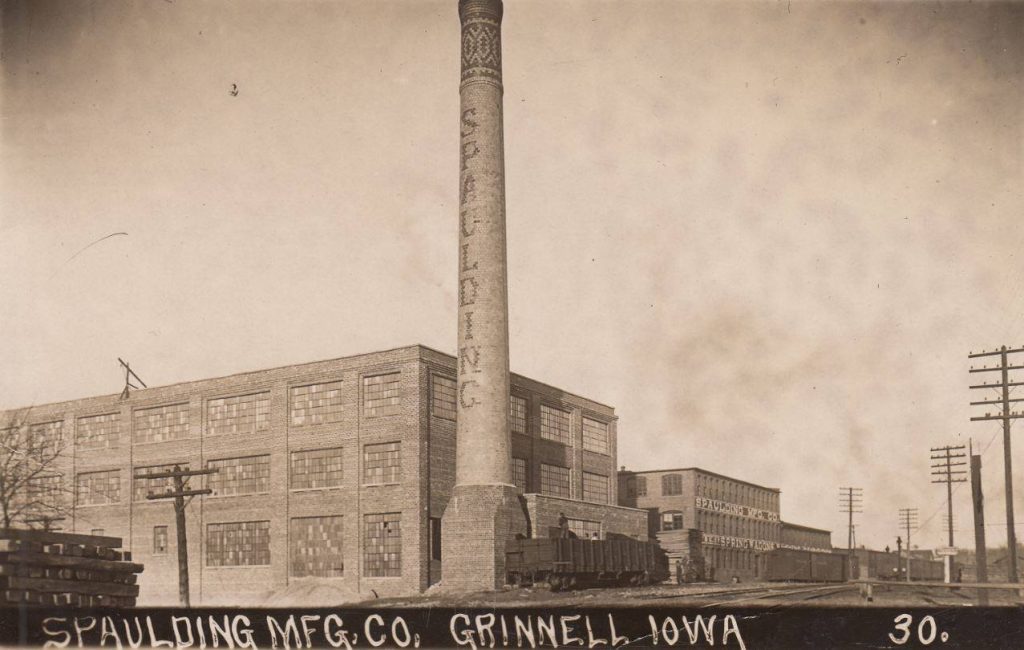
Spaulding Manufacturing and the Spaulding buildings have been a significant presence in Grinnell since the 1880s (read a brief history here). The buildings were all constructed for a thriving buggy company between 1880 and 1910. The structures were added to the National Registry of Historic Places in 1978. For many years it was one of the largest employers in the area, providing jobs for 350 people at its peak. When motorized vehicles came on the scene, Spaulding added automobiles to their manufacturing efforts. Although they had some notable achievements and accolades, including setting several speed records, like many other small car companies of the time they could not compete with the low cost of Henry Ford’s assembly line. The cars were only made from 1909-1916.
The buildings were home to many other businesses in the following decades, including a shoe factory, seed corn, and a sign company at various times. But as the twentieth century came to a close, the site was in significant disrepair and in danger of being lost. Through a series of events, the site was eventually renovated and is now home to the Spaulding Loft Apartments and offices for the City of Grinnell.
This page provides details of the most significant chapters of the 140 year history of the Spaulding buildings. An excellent source for history of the Spaulding Automobile is available in the book Great Cars of the Great Plains by Curt McConnell. You can read an excerpt here. The book is also available to check out from Drake Community Library.
Then and Now (click to enlarge and advance)
Spaulding Buggies
In 1876, Henry W. Spaulding came to Grinnell, Iowa from Vermont. He opened a blacksmith and wagon repair shop on Main Street. By 1882, he was producing hundreds of buggies (350 in 1882) which were sold via his “trailing system”. His own innovation in distribution and sales, the trailing system involved stringing 4 or 5 wagons together and hauling them around the countryside until all were sold. During the 1880s, Spaulding’s success attracted additional capital and by 1890 his growing wagon works had moved to the corner of Spring and 4th Avenue.
Over the next three decades, the Spaulding Manufucturing facility would expand to multiple buildings and dominate two blocks along Fourth Avenue. In the years prior to 1910, they were manufucturing well over 6000 wagons and carraiges each year. The Grinnell Historical Museum has at least one carriage in their collection and on display.
In 1909, with motorized vehicles growing in popularity, Spaulding diversified and added automobile manufacturing to the facility. They continued to also make carriages, thus limiting their ability to fully focus on the new automobile line.
Spaulding buggies (click to enlarge and advance)
Spaulding Automobiles
In 1909, with decades of successful carriage manufacturing as a foundation, Spaulding expanded efforts and began to manufacture automobiles. Over the next 7 years, the company would have success in creating innovative and record breaking vehicles. But in the end they could not compete with the less expensive vehicles being manufactured by Mr. Ford in Detroit.
During the 7 years of production, the Spaulding cars were known for their powerful engines. A Spaulding car carrying six men climbed the steps of the Iowa Capital in Des Moines. And in October 1913, a Spaulding Race Car driven by Hal Wells set the world speed record in the Iowa River to River Road Race. He went 335.8 miles in 9 hours and 14 minutes.
An extensive history of the Spaulding Automobile is included in “Great Cars of the Great Plains” by Curt McConnell (University of Nebraska Press, 1995). The 40 page chapter provides detailed information and extensive photographs. You may view an excerpt of the chapter here. The book is also available to check out from many libraries, including Drake Community Library.
Spaulding Automobiles (click to enlarge and advance)
Henry Spaulding
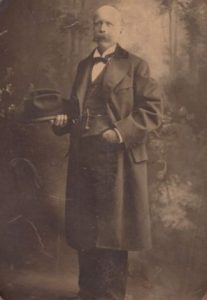
Henry W. Spaulding was born in Vermont where he earned a reputation at a young age of being resourceful and hard working. He left school after the eighth grade and opened a blacksmith shop in his hometown of Chelsea, Vermont by age 19, making buggies as a sideline.
In 1876 he moved to Grinnell, Iowa and opened a shop on Main Street. He divided his time between blacksmithing and building carriages and wagons until 1882, when a terrible cyclone destroyed his home along with many in town. Not only did he suffer a horrible loss of property, he was also physically injured. According to the account of his granddaughter, Miriam Spaulding Simms, as recorded in the book Great Cars of the Great Plains, “the tornado ripped through Spaulding’s home, spun him through the air for eight to 10 blocks, and set him down only after inflicting a permanent arm injury that prevented him from swinging a heavy blacksmith’s hammer.”
Despite this setback, he rebuilt and in 1883 manufactured 350 buggies. The company continued to grow, overcoming another setback caused by a fire in 1893. By 1909, more that 10,000 buggies, carriages and spring wagons were being manufactured out of the the Grinnell plant. It was one of the largest businesses in Iowa and Henry Spaulding was one of the richest men in the state.
In addition to Spaulding Manufacturing, Henry Spaulding was concerned with many other things, the local paper naming him the most energetic man in Grinnell at one point. He was a city councilman, served two terms as the Mayor of Grinnell, and two terms as a state senator. He was a part of founding the Grinnell Washing Machine Company, the Colonial Theatre, Citizens National Bank, and helped Grinnell aviator Billy Robinson.
Henry Spaulding passed away on January 20, 1937, at the age of 90. He was hailed as one of the most prominent citizens of Poweshiek County. Read more here.
The Spaulding family built four homes along Main Street during the early 1900s. The most prominent among them was built by E. H. Spaulding house at the corner of 6th and Main. The Chamber of Commerce created this video tour of the home in 2013 when the home was the Spaulding B&B.
The Buildings
The buildings that were once home to Spaulding Manufacturing are located on the south side of Grinnell’s Fourth Avenue, filling the block between Spring and Pearl Streets (the original complex included buildings one block east). Just south of the buildings are the railroad tracks that once brought items to and from the bustling manufacturing facility.
The south and west buildings were renovated by Hubble Realty into the Spaulding Loft Apartments, featuring original architectural elements such as high ceilings, large windows and exposed wooden beams and brick in 72 one and two-bedroom apartments.
Celebrating Spaulding
In 1993, Curt McConnell retraced the route of the 1913 River to River route, the path followed by Hal Wells when he set the land speed record by covering the distances of 335.8 miles in 9 hours and 14 minutes. The coverage of the 1993 run included two articles, one published before and one after, that provided interesting details of the 1913 run.
In 2005 , the remnants of the only Spaulding automobile known to exist returned to Grinnell, where it was manufactured in 1913. The 60% of the car that remains has been renovated and is on display in the museum section of the Grinnell City Hall building.



